DNA and Protein Synthesis Worksheet
In the field of genetics and molecular biology, DNA and protein synthesis are fundamental concepts that require a thorough understanding. If you're a student or a professional in this field, you'll be delighted to know that there are worksheets available to help you strengthen your knowledge and grasp these complex topics more effectively. These worksheets are designed to provide you with practical exercises and questions that focus on the core concepts of DNA and protein synthesis, allowing you to engage with the material and enhance your learning experience.
Table of Images 👆
- Protein Synthesis Worksheet Answer Key
- DNA Protein Synthesis Worksheet Answers
- Protein Synthesis Worksheet Answers
- Protein Synthesis Worksheet DNA and RNA
- DNA and RNA Protein Synthesis Worksheet Answers
- DNA and Protein Synthesis Worksheet Answers
- DNA RNA Protein Synthesis Worksheet Answers
- Organic Molecules Worksheet Review Answer Key
- DNA Replication Worksheet Answer Key
More Other Worksheets
Kindergarten Worksheet My RoomSpanish Verb Worksheets
Cooking Vocabulary Worksheet
DNA Code Worksheet
Meiosis Worksheet Answer Key
Art Handouts and Worksheets
7 Elements of Art Worksheets
All Amendment Worksheet
Symmetry Art Worksheets
What is DNA?
DNA, or deoxyribonucleic acid, is a molecule that contains the genetic instructions necessary for the development, functioning, growth, and reproduction of all living organisms. It is a double-stranded helical structure made up of nucleotides that carry the genetic information encoded in their sequence of nitrogenous bases (adenine, thymine, guanine, and cytosine). DNA is found in the nucleus of cells and plays a vital role in determining an organism's traits and characteristics through the process of gene expression.
What are the primary components of DNA?
The primary components of DNA are nucleotides, which consist of a sugar molecule (deoxyribose), a phosphate group, and a nitrogenous base (adenine, thymine, cytosine, or guanine). These nucleotides are arranged in a double helix structure, with the sugar-phosphate backbone on the outside and the nitrogenous bases pairing up in the center through hydrogen bonds (A with T, and C with G).
How is DNA organized in the cell?
DNA is organized in the cell in the form of a double helix structure, wrapped around proteins called histones to form chromatin. This chromatin further condenses and coils to form chromosomes, which are visible during cell division. DNA is stored in the nucleus of eukaryotic cells, while in prokaryotic cells it is found in a region called the nucleoid. The organization of DNA allows for efficient storage, replication, and transmission of genetic information during various cellular processes.
What is the role of DNA in protein synthesis?
DNA is essential for protein synthesis as it carries the genetic information needed to code for specific proteins. During protein synthesis, DNA in the cell's nucleus is transcribed into messenger RNA (mRNA), which carries the instructions for building a specific protein. The mRNA then travels to the ribosomes, where transfer RNA (tRNA) molecules read the mRNA code and bring the corresponding amino acids to the ribosome, allowing the protein to be constructed based on the DNA code. Therefore, DNA provides the blueprint for protein synthesis, ultimately determining the structure and function of proteins in the cell.
What is transcription in protein synthesis?
Transcription is the first step in protein synthesis where genetic information from DNA is copied into messenger RNA (mRNA) by the enzyme RNA polymerase. This process occurs in the nucleus of eukaryotic cells and serves as a template for translation, where the mRNA is used to assemble the amino acids into a protein.
What is translation in protein synthesis?
Translation in protein synthesis is the process where the information encoded in the mRNA (messenger RNA) is decoded to assemble a specific amino acid sequence, forming a protein. This process takes place in the ribosomes and involves transfer RNA (tRNA) molecules that carry specific amino acids and match them with the corresponding codons on the mRNA. As the ribosome moves along the mRNA, tRNA molecules add their amino acids to the growing protein chain according to the genetic code. This results in the synthesis of a functional protein based on the instructions provided by the mRNA.
What is the role of mRNA in protein synthesis?
mRNA (messenger RNA) plays a key role in protein synthesis as it carries the genetic information from DNA to the ribosome, where proteins are made. It acts as a template for the ribosome to read and translate the genetic code into a specific sequence of amino acids, which then form proteins through a process known as translation. Ultimately, mRNA serves as the intermediary between DNA and protein synthesis, facilitating the accurate and efficient production of proteins in the cell.
What is the role of tRNA in protein synthesis?
tRNA (transfer RNA) plays a crucial role in protein synthesis by carrying specific amino acids to the ribosome during translation. Each tRNA molecule is linked to a specific amino acid, and its anticodon sequence base-pairs with the complementary codon on the mRNA, ensuring that the correct amino acid is added to the growing polypeptide chain. This process is essential for the accurate translation of the genetic code into functional proteins in the cell.
What are codons and anticodons?
Codons are a sequence of three nucleotides in messenger RNA (mRNA) that correspond to a specific amino acid during protein synthesis. Anticodons, on the other hand, are a set of three nucleotides found in transfer RNA (tRNA) that are complementary to a specific codon on mRNA. Anticodons enable tRNA to recognize and bind to the corresponding codons on mRNA, facilitating the translation of genetic information into protein sequences during protein synthesis.
How does protein synthesis contribute to cellular functions?
Protein synthesis is essential for cellular functions as proteins are the building blocks and workhorses of cells. Proteins carry out various functions such as providing structure to cells, catalyzing chemical reactions, transporting molecules, transmitting signals, and regulating gene expression. Without protein synthesis, cells would not be able to perform these vital tasks, ultimately leading to cellular dysfunction and potentially death.
Have something to share?
Who is Worksheeto?
At Worksheeto, we are committed to delivering an extensive and varied portfolio of superior quality worksheets, designed to address the educational demands of students, educators, and parents.

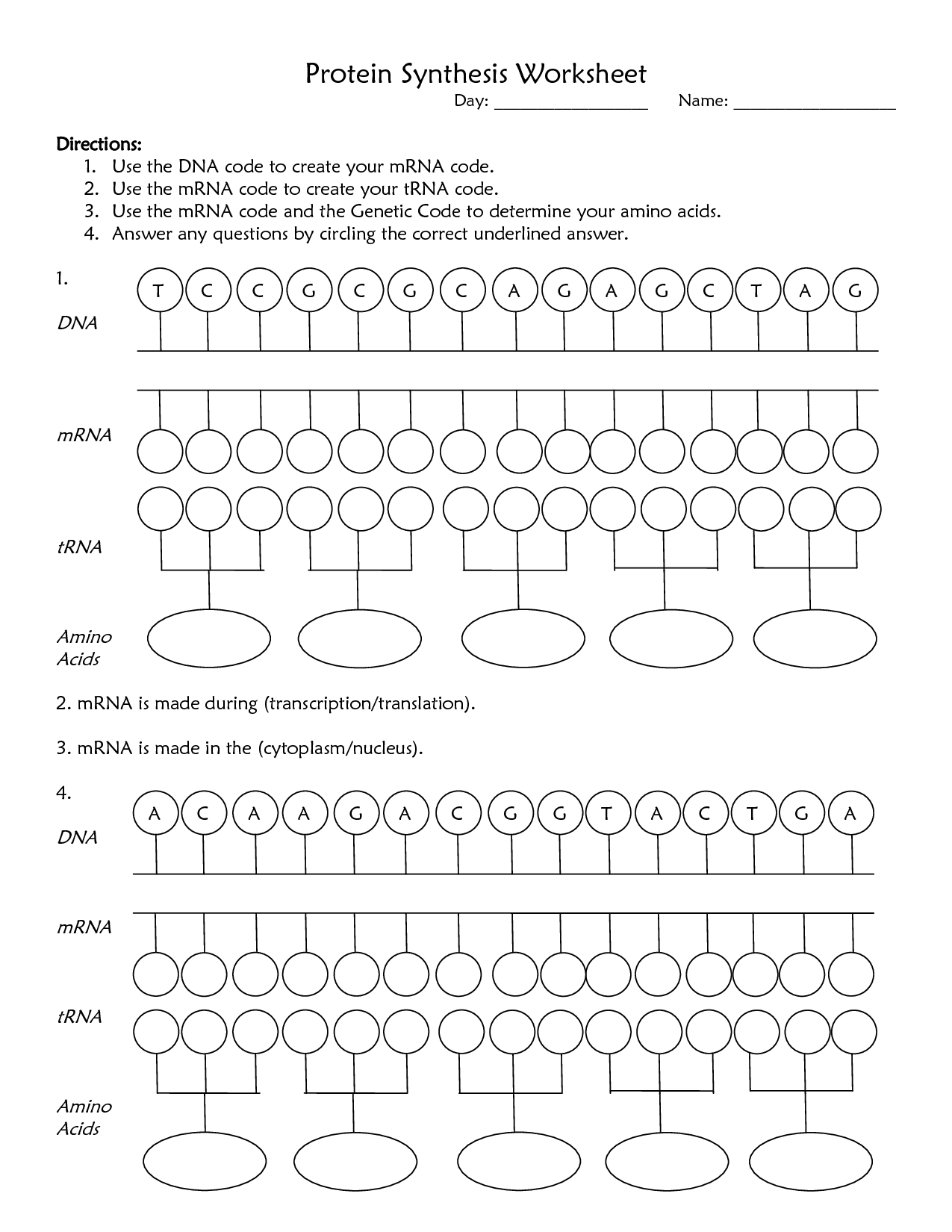



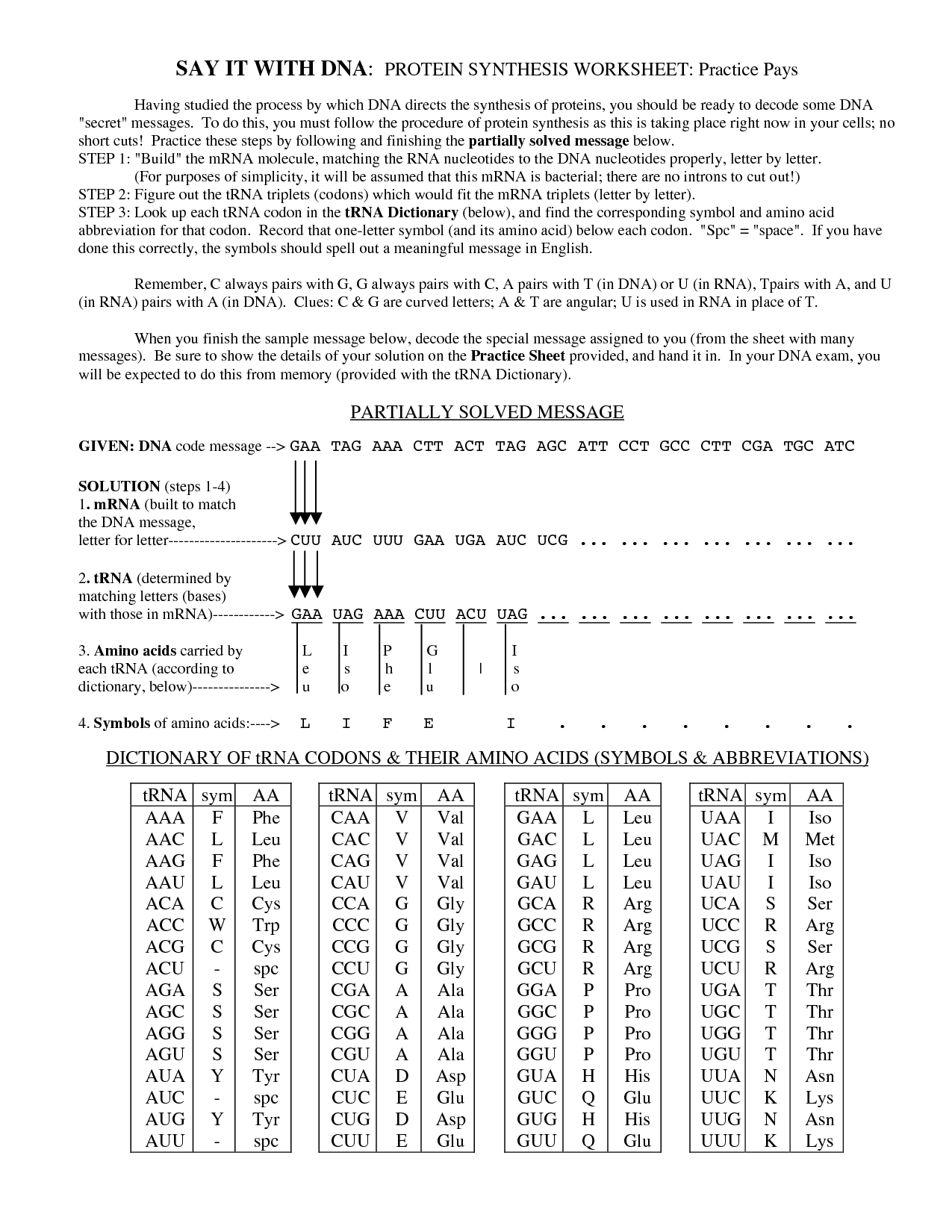
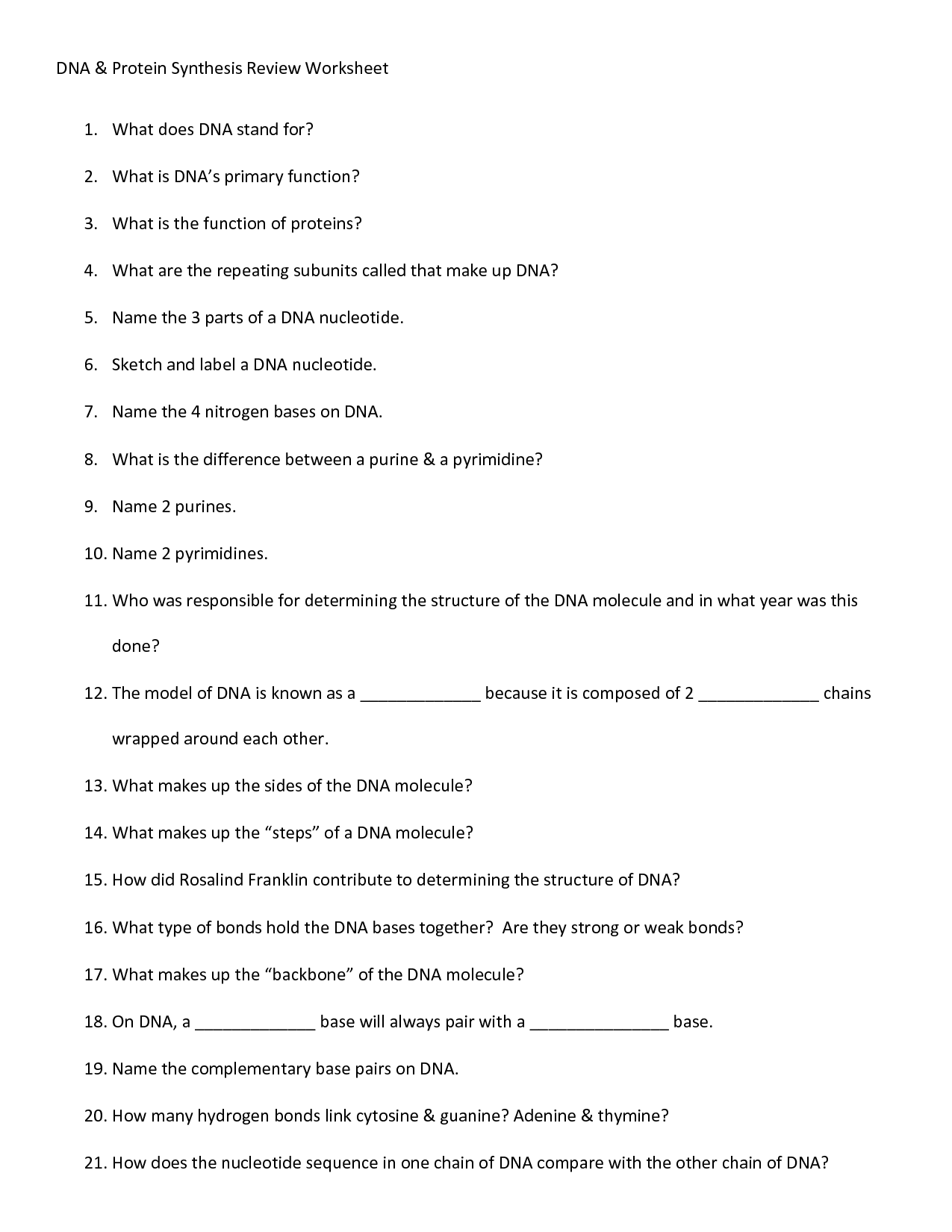
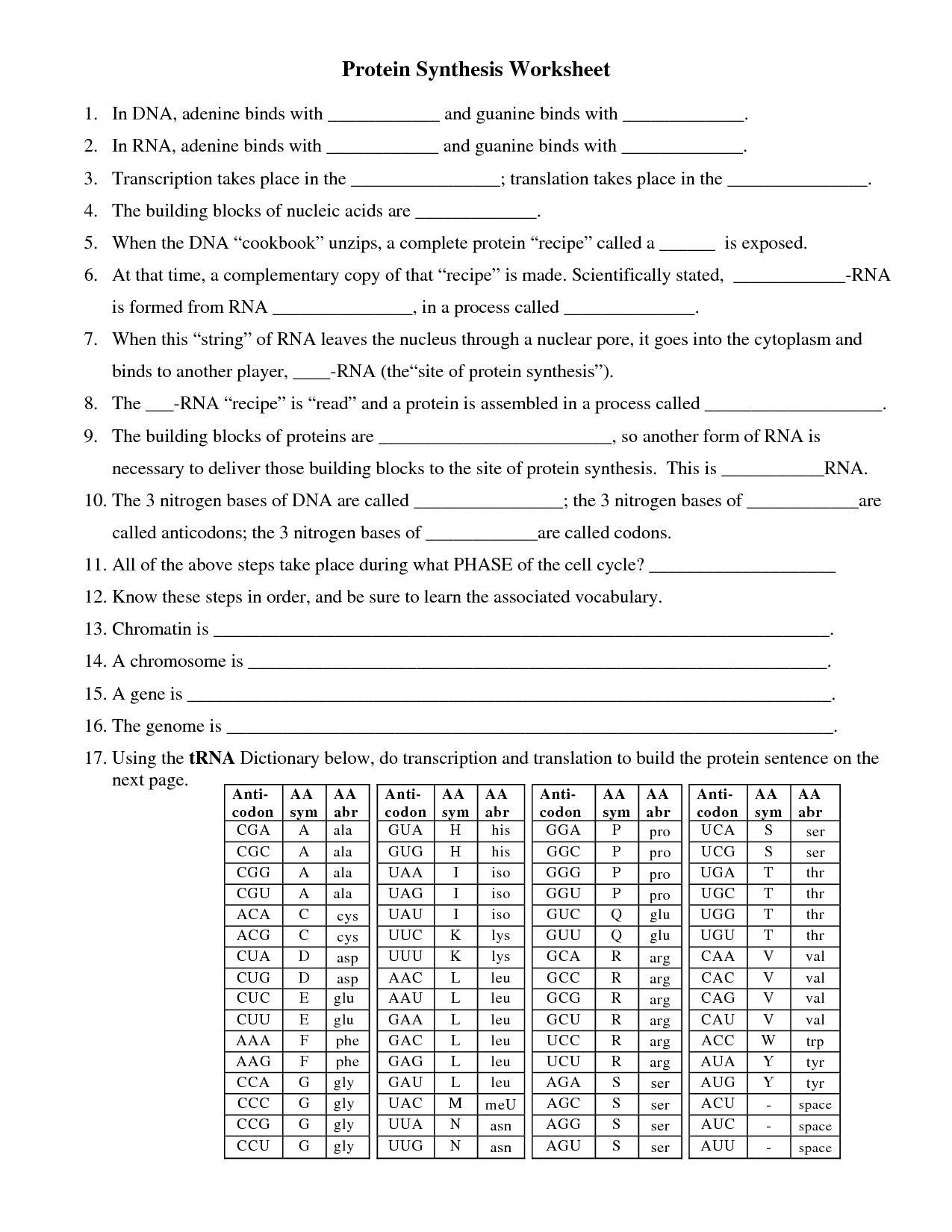
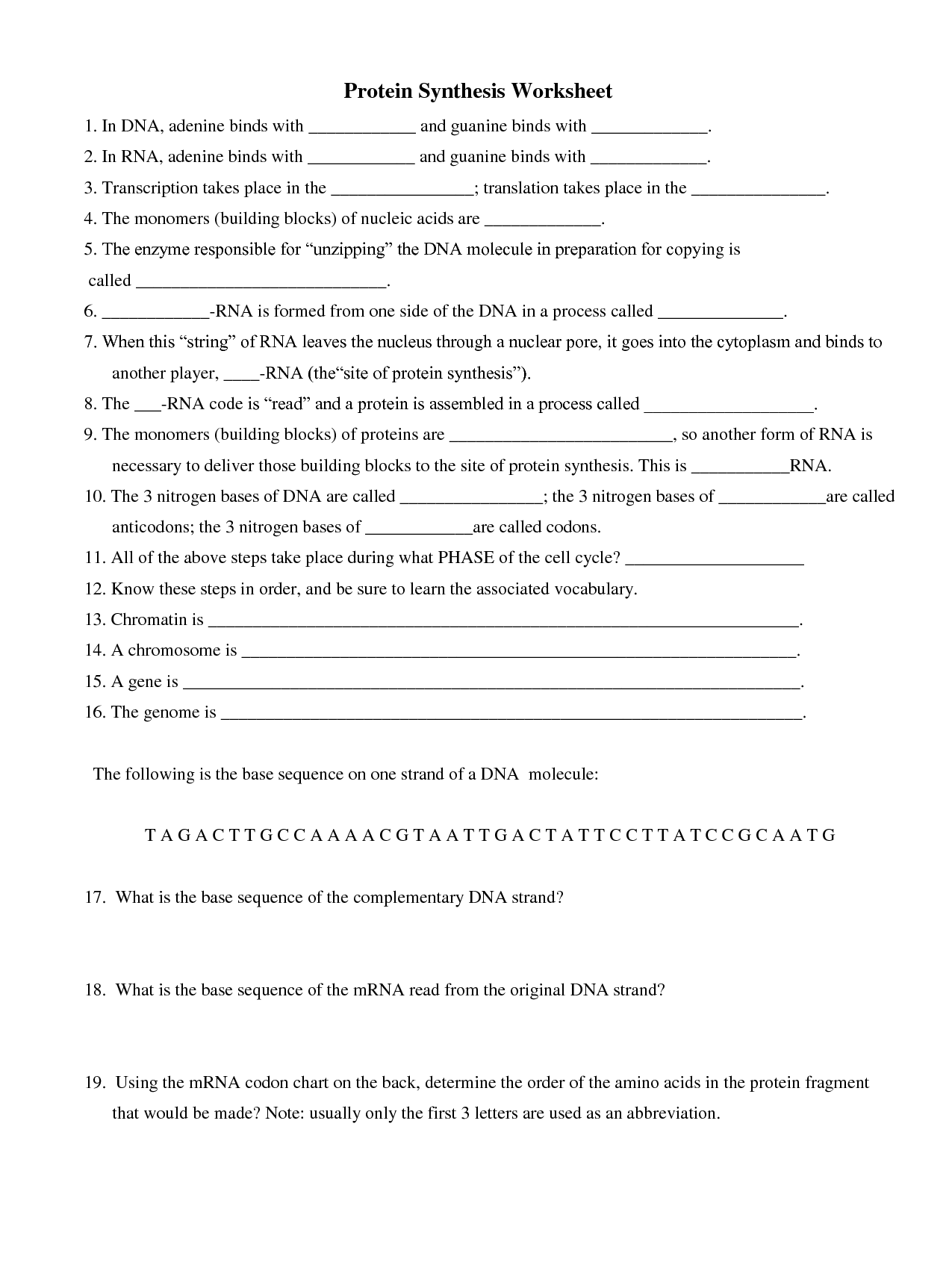
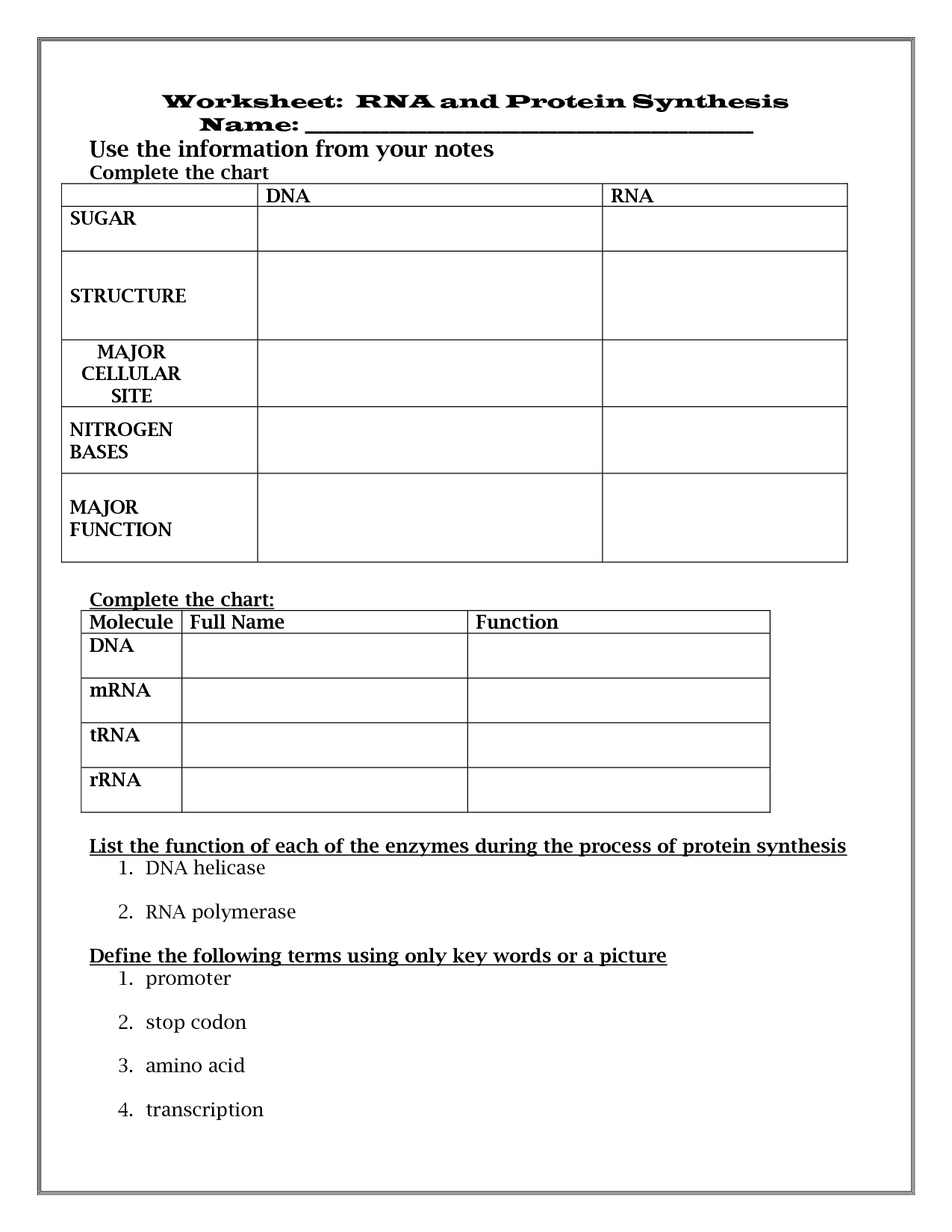
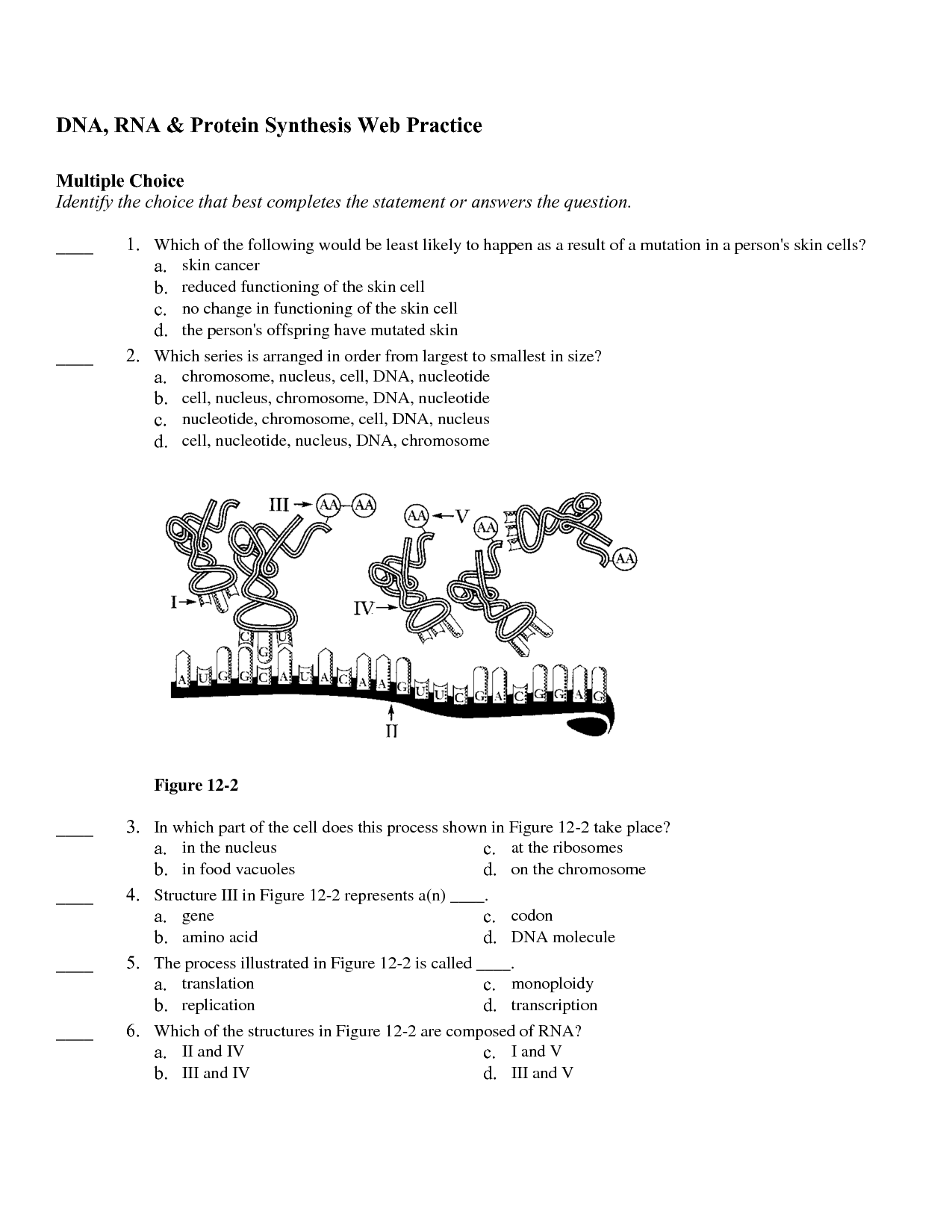
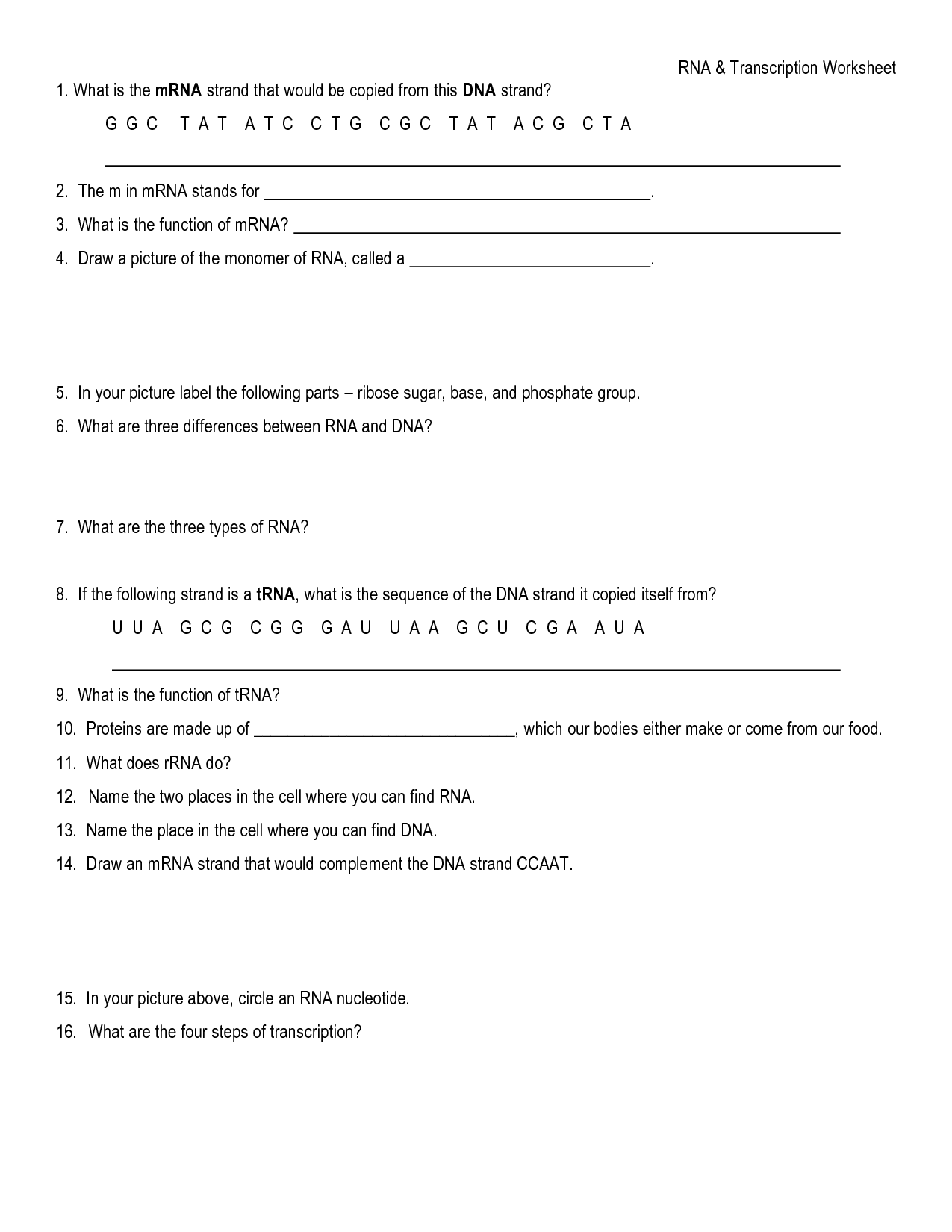


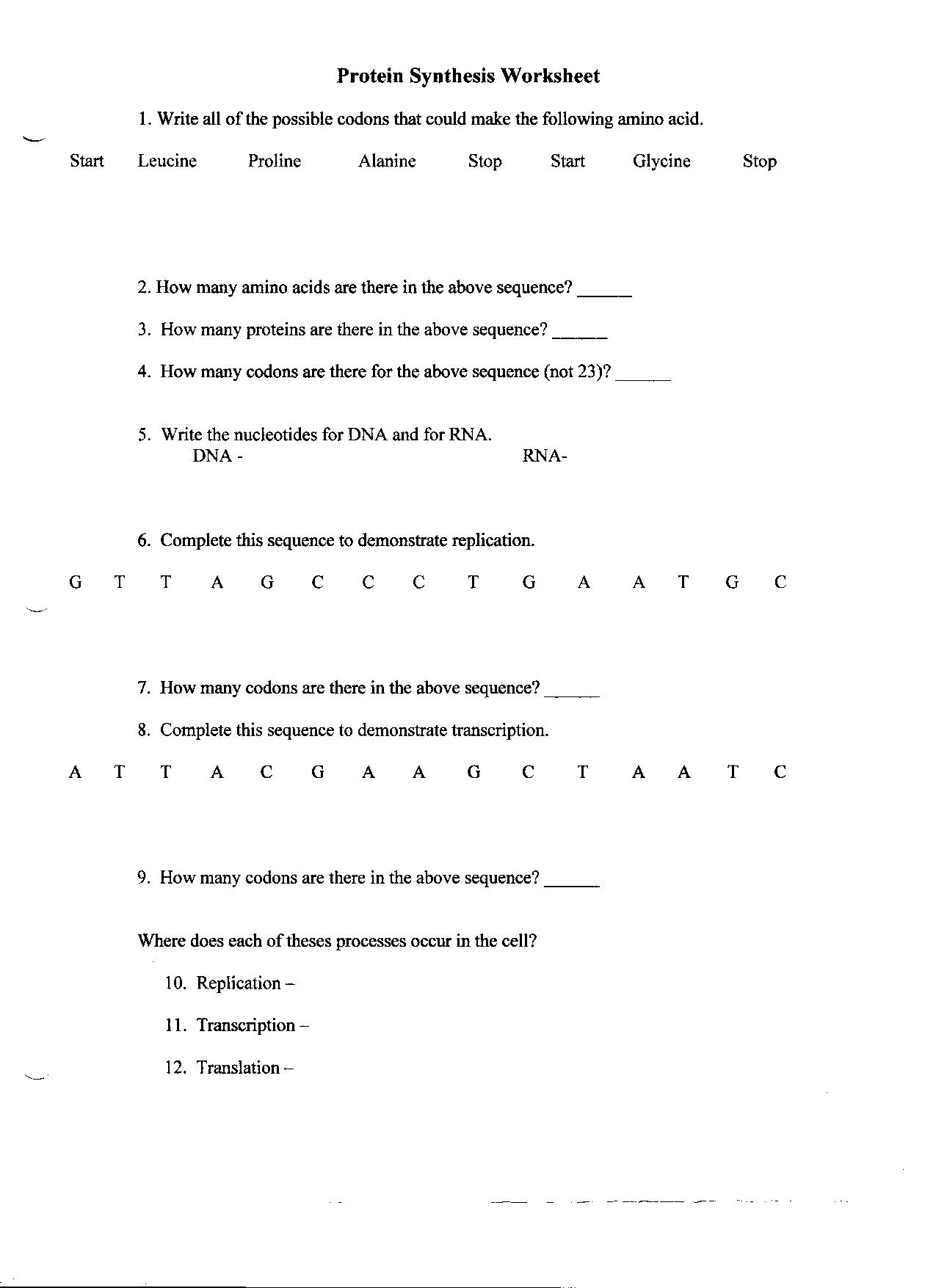
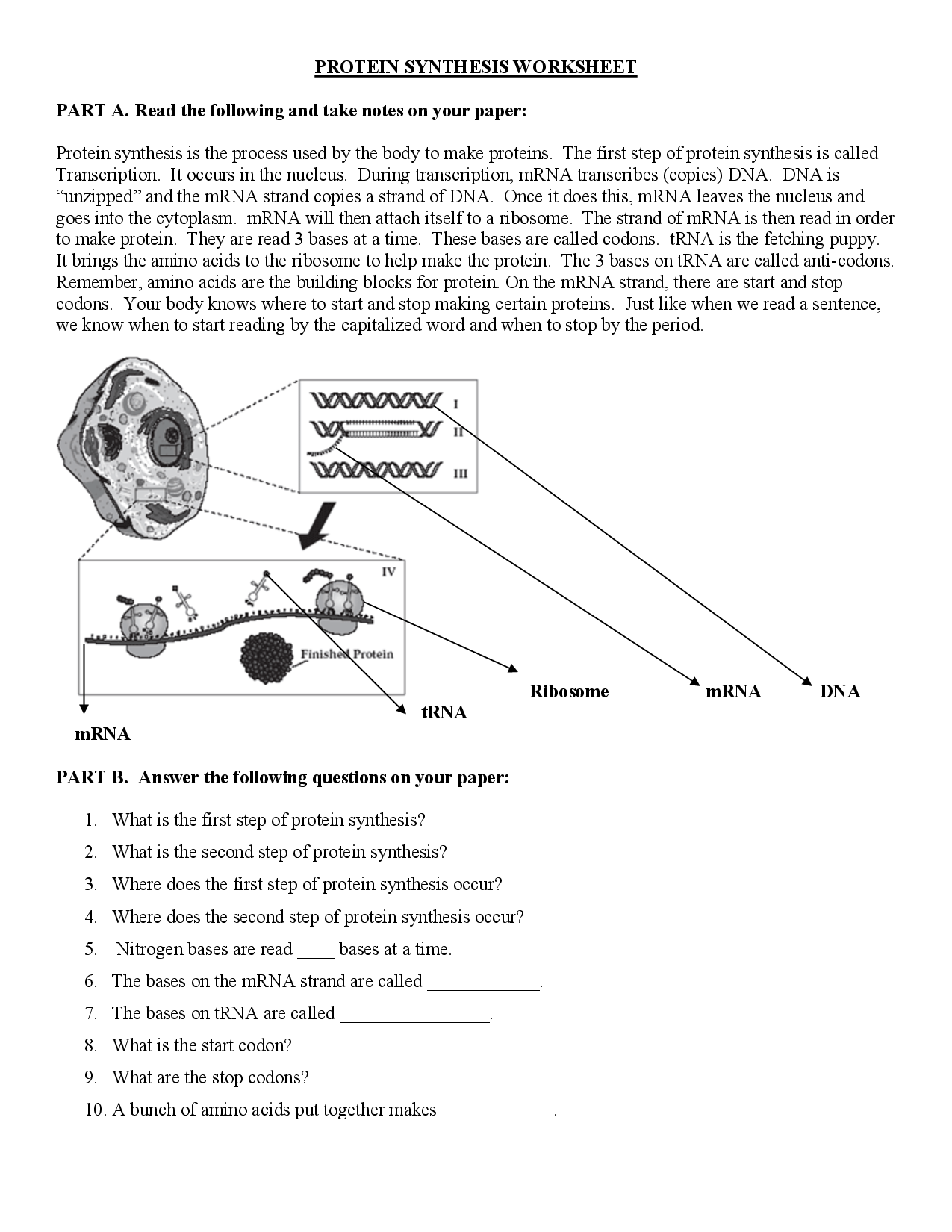
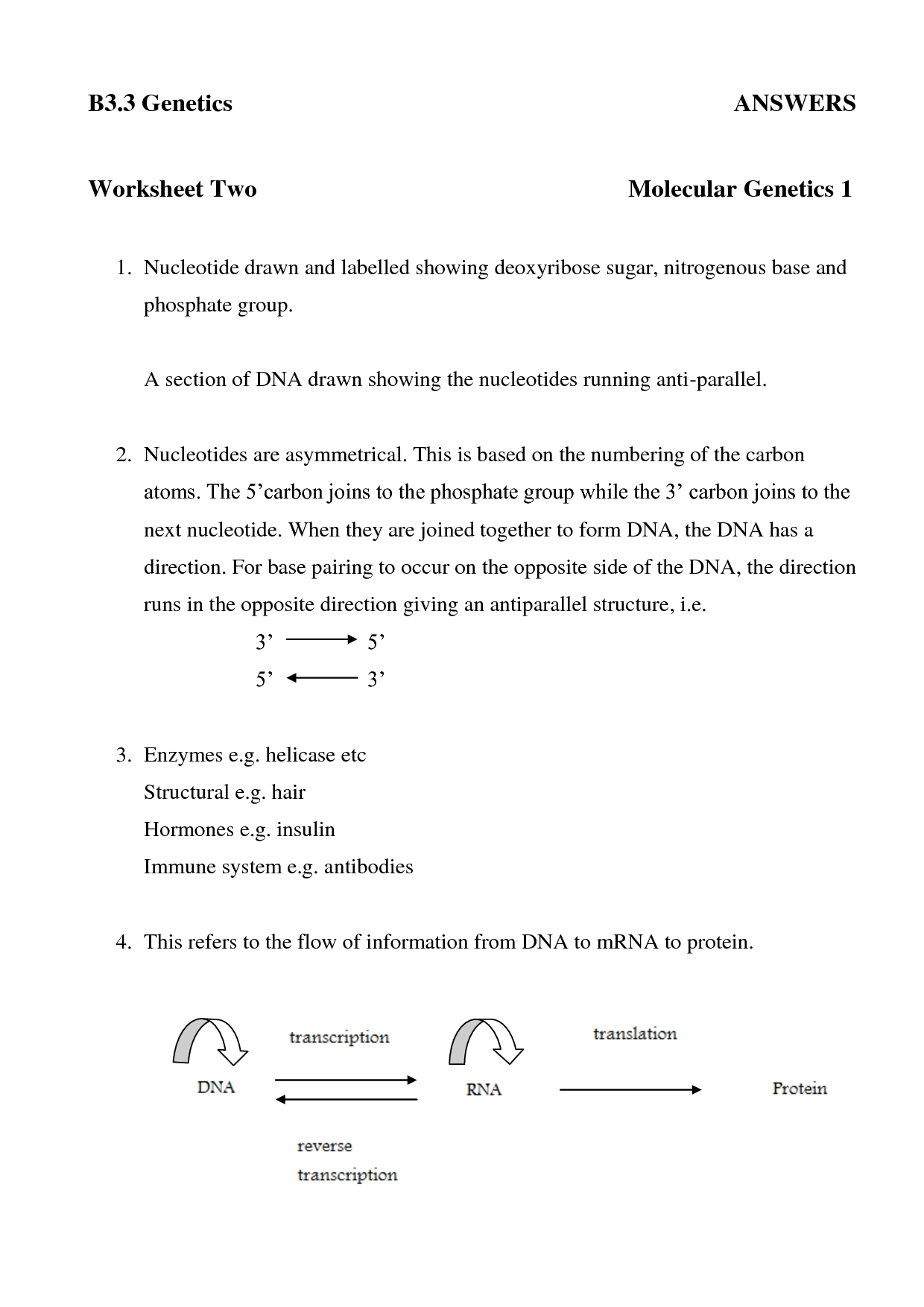
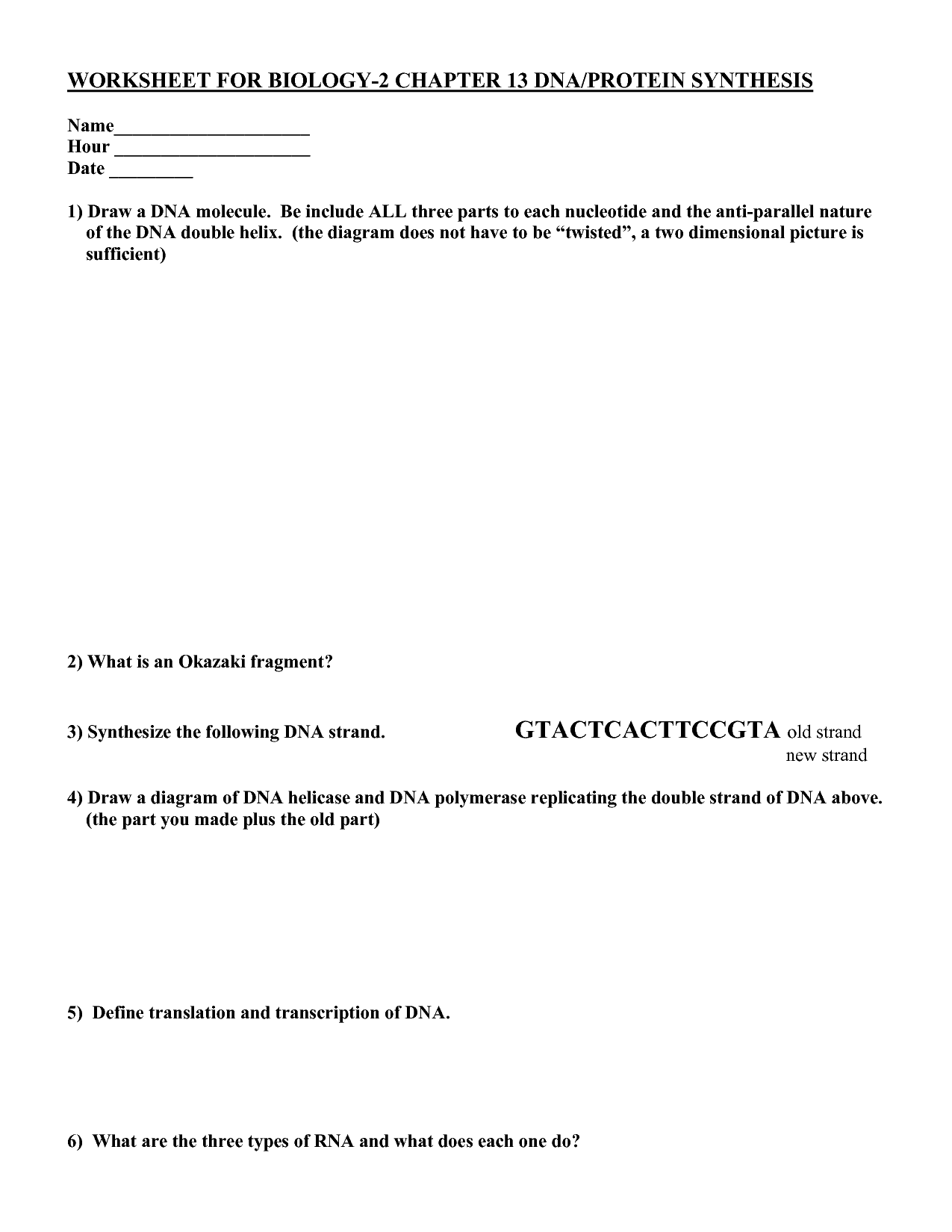
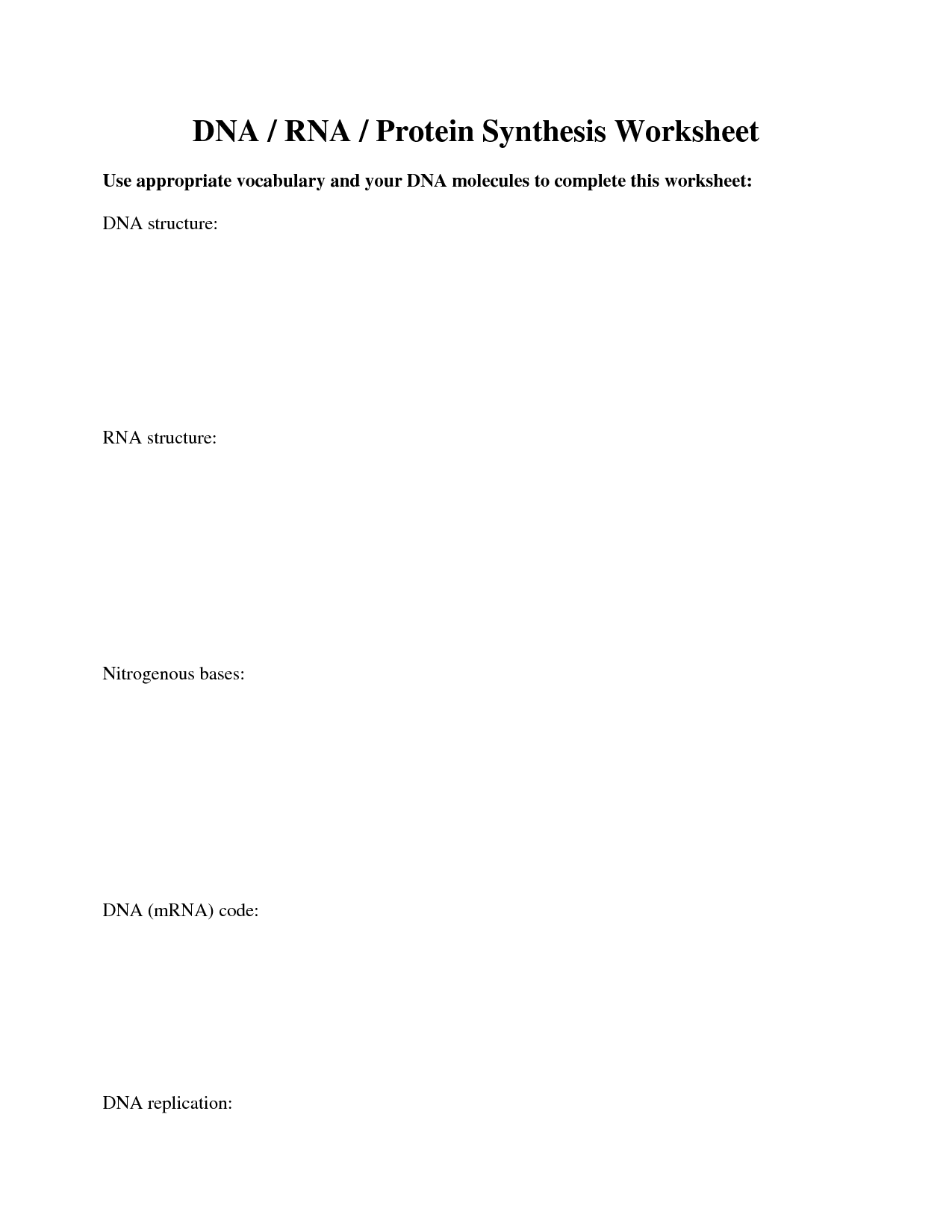
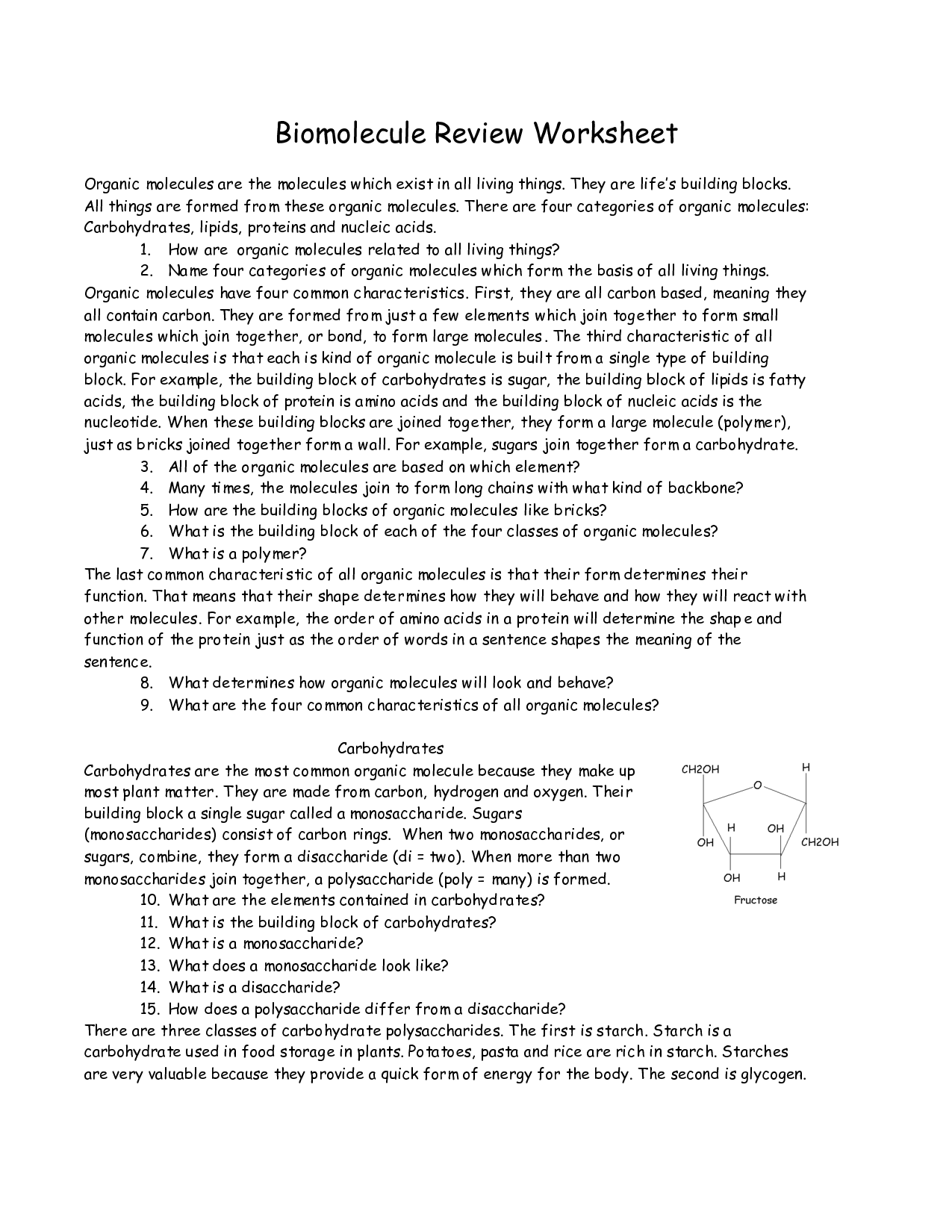
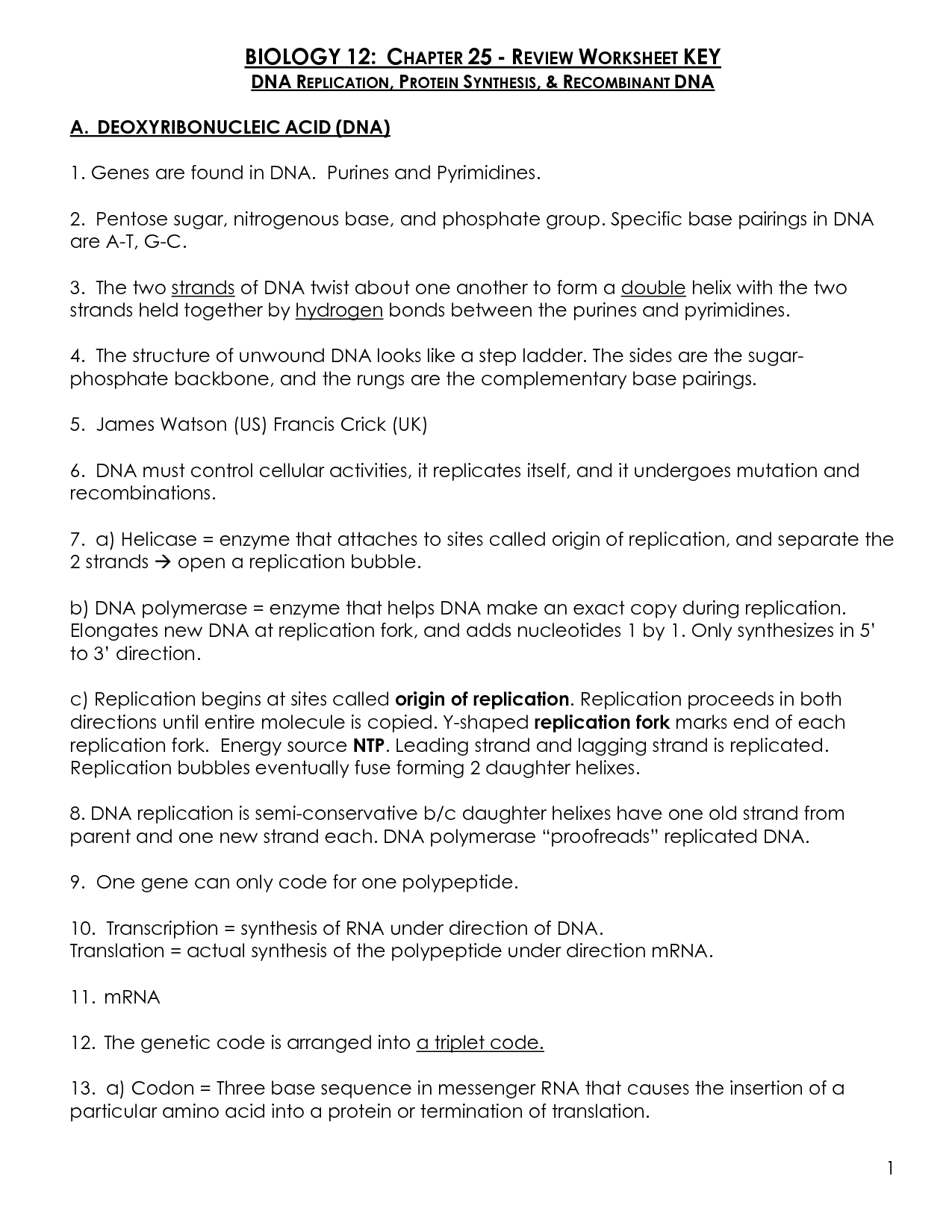














Comments